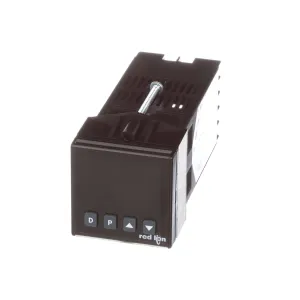The Pixy2 cam is an advanced camera with its own processor. This is an amazing sensor for making the line following industrial grade robots along with colour recognition and object recognition facilities. This is also compatible with Arduino and Raspberry Pi with available libraries. The cable for connecting to Arduino and Raspberry Pi Boards is provided with the Pixy2. The Pixy 2 is highly accurate and fast can enable your robots to follow lines of all thicknesses and even as thin as 3 mm at high speeds!!
Pixy2 is the second version of Pixy. It's faster, smaller and more capable than the original Pixy, adding line tracking/following algorithms as well as other features. With the added functionality of line detection, intersection detection and small barcodes, this makes the job much simpler and robots much more accurate.
The integrated light source of Pixy2 provides an added benefit while line following or following colour based objects.
And of course, Pixy2 does everything that the original Pixy can do. Like its predecessor, the Pixy2 can learn to detect objects that you teach it, just by pressing a button. With these new algorithms, you can detect intersections and “road signs” as well. The Pixy2 has several interfaces including SPI, I2C, UART, and USB with simple communications, so you get your chosen controller talking to the Pixy2 in short order.
The Pixy2 uses a colour-based filtering algorithm to detect objects. Colour-based filtering methods are popular because they are fast, efficient, and relatively robust. Pixy2 calculates hue and saturation of each RGB pixel from the image sensor and uses these as the primary filtering parameters
FEATURES
Pixy2 detects lines, intersections and small barcodes, intended for line-following robots
Improved framerate: 60 frames/second
Tracking algorithms have been added to color-based object detection
Improved and simplified libraries for Arduino, Raspberry Pi and other controllers
Integrated light source
Small, fast, easy-to-use, low-cost, readily-available vision system
Connects to Arduino with included cable. Also works with Raspberry Pi, BeagleBone and similar controllers
Communicates via one of several interfaces: SPI, I2C, UART, USB or analog/digital output
C/C and Python are supported
Configuration utility runs on Windows, MacOS and Linux
All software/firmware is open-source GNU-licensed















![i2Systems Ember E1150Z Snap-In - Polished Chrome - Round - Warm White Light [E1150Z-11CAB] i2Systems Ember E1150Z Snap-In - Polished Chrome - Round - Warm White Light [E1150Z-11CAB]](https://www.virtqx.shop/image/i2systems-ember-e1150z-snap-in-polished-chrome-round-warm-white-light-e1150z-11cab_GcgONw_300x.webp)

